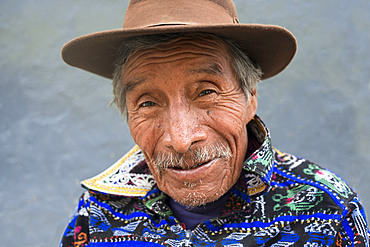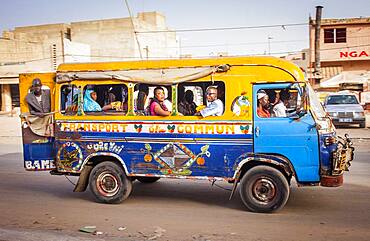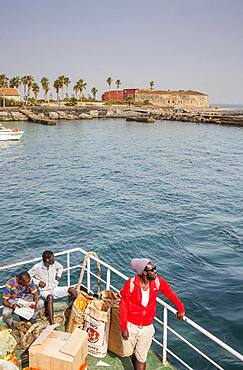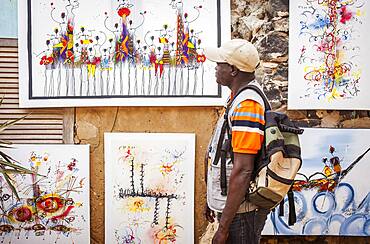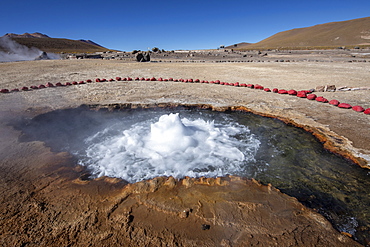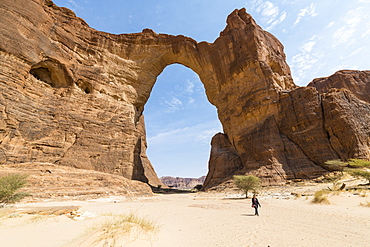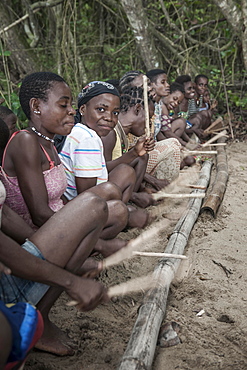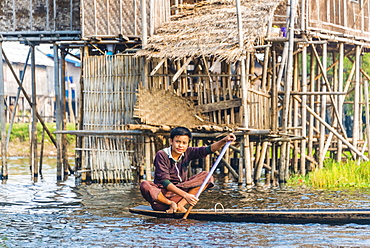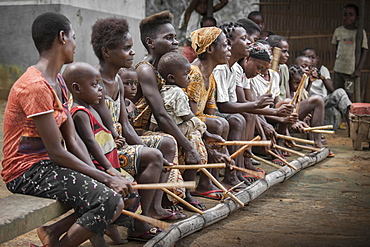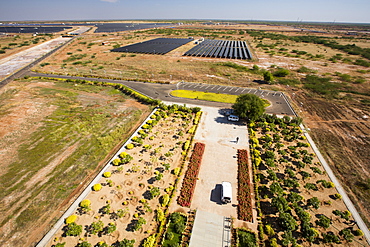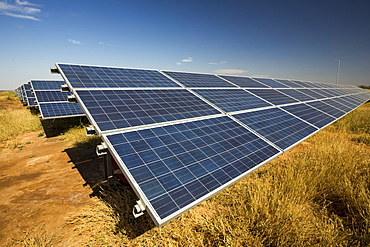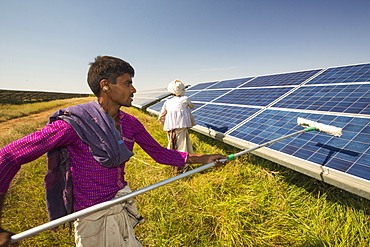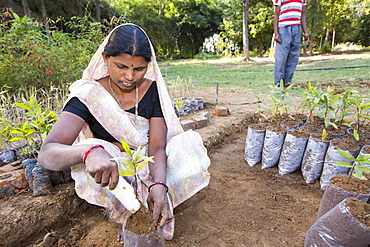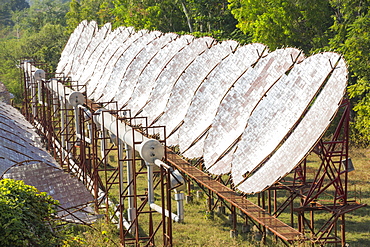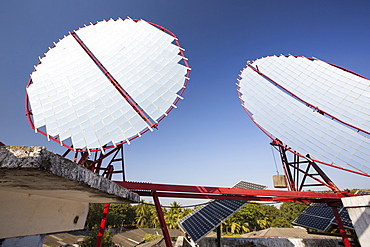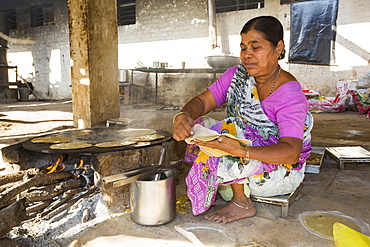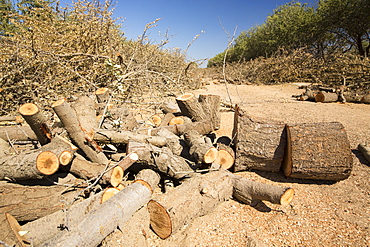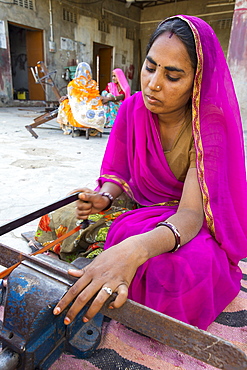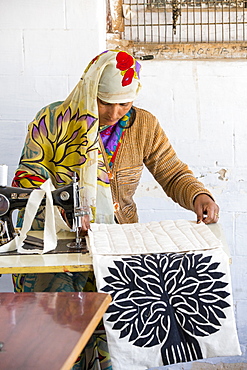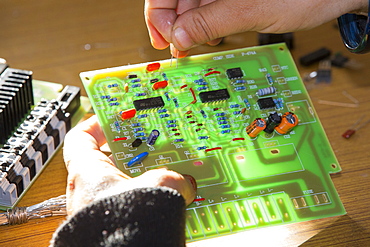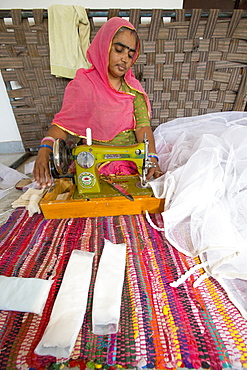Recent searches
Loading...
1184-8002 - Church of the Third Order of Mount Carmel, UNESCO World Heritage Site, Sao Cristovao, Sergipe, Brazil, South America
1184-8001 - Church of the Third Order of Mount Carmel, UNESCO World Heritage Site, Sao Cristovao, Sergipe, Brazil, South America
1184-7999 - Church of the Third Order of Mount Carmel, UNESCO World Heritage Site, Sao Cristovao, Sergipe, Brazil, South America
1367-10 - Mount Teide, the third active largest volcano in the world and the tallest mountain in Spain, UNESCO World Heritage Site, Teide, Tenerife, Canary Islands, Spain, Atlantic, Europe
1350-3780 - Portrait of a man in traditional dress remain in one of the streets of Chichicastenango, Guatemala.
1350-1397 - Traditional public transport bus, Dakar, Senegal
1350-1395 - African Renaissance Monument, Dakar, Senegal. April 4, 2010. Sculptor, Pierre Goudiaby.
1350-1402 - Statue Commemorating the End of Slavery, Goree Island, near Dakar, Senegal
1350-1399 - Street scene, medina quarter, Dakar, Senegal
1350-1404 - The Slave House, Island of Goree, UNESCO World Heritage Site, near Dakar, Senegal, West Africa, Africa
1350-1398 - Tilene market, Dakar, Senegal, West Africa, Africa
1350-1400 - Ferry arriving at Goree Island, in background fort d´Estrees, near Dakar, Senegal, West Africa, Africa
1350-1401 - Tourist, in Workshop of Fallow painter, Goree island, near Dakar, Senegal
1350-1403 - The Slave House, Island of Goree, UNESCO World Heritage Site, near Dakar, Senegal, West Africa, Africa
1116-49721 - Poor district slums with wooden houses over water, Cebu city, Philippines
1184-5389 - Aerial of El Bernal, third largest monolith in the world, Queretaro, Mexico, North America
1184-5388 - Aerial of El Bernal, third largest monolith in the world, Queretaro, Mexico, North America
1112-5282 - Geysers del Tatio (El Tatio), the third largest geyser field in the world, Andean Central Volcanic Zone, Antofagasta Region, Chile, South America
1112-5276 - Tourists at the Geysers del Tatio (El Tatio), the third largest geyser field in the world, Andean Central Volcanic Zone, Antofagasta Region, Chile, South America
1112-5284 - Geysers del Tatio (El Tatio), the third largest geyser field in the world, Andean Central Volcanic Zone, Antofagasta Region, Chile, South America
1112-5277 - Tourists at the Geysers del Tatio (El Tatio), the third largest geyser field in the world, Andean Central Volcanic Zone, Antofagasta Region, Chile, South America
1112-5274 - Tourists at the Geysers del Tatio (El Tatio), the third largest geyser field in the world, Andean Central Volcanic Zone, Antofagasta Region, Chile, South America
1112-5286 - Geysers del Tatio (El Tatio), the third largest geyser field in the world, Andean Central Volcanic Zone, Antofagasta Region, Chile, South America
1112-5275 - Tourists at the Geysers del Tatio (El Tatio), the third largest geyser field in the world, Andean Central Volcanic Zone, Antofagasta Region, Chile, South America
1112-5285 - Geysers del Tatio (El Tatio), the third largest geyser field in the world, Andean Central Volcanic Zone, Antofagasta Region, Chile, South America
1112-5281 - Pre-dawn light on the Geysers del Tatio (El Tatio), the third largest geyser field in the world, Andean Central Volcanic Zone, Antofagasta Region, Chile, South America
1112-5283 - Pre-dawn light on the Geysers del Tatio (El Tatio), the third largest geyser field in the world, Andean Central Volcanic Zone, Antofagasta Region, Chile, South America
1112-5278 - Tourists at the Geysers del Tatio (El Tatio), the third largest geyser field in the world, Andean Central Volcanic Zone, Antofagasta Region, Chile, South America
1112-5279 - Tourists at the Geysers del Tatio (El Tatio), the third largest geyser field in the world, Andean Central Volcanic Zone, Antofagasta Region, Chile, South America
1112-5280 - Pre-dawn light on the Geysers del Tatio (El Tatio), the third largest geyser field in the world, Andean Central Volcanic Zone, Antofagasta Region, Chile, South America
1184-3112 - Third largest rock arch in the world, Ennedi Plateau, UNESCO World Heritage Site, Ennedi region, Chad, Africa
83-13087 - Muslim Cham fishing people that live on their boats, dwindling fish stocks have caused poverty, River Mekong, Phnom Penh, Cambodia, Indochina, Southeast Asia, Asia
83-13086 - Muslim Cham fishing people that live on their boats, dwindling fish stocks have caused poverty, River Mekong, Phnom Penh, Cambodia, Indochina, Southeast Asia, Asia
832-379916 - Pygmies, people of Baaka, or Baka, or Ba'aka, Music Performance and Dance, Grand Batanga, Southern Region, Cameroon, Africa
832-379907 - Women washing clothes in the river Ntem, in the rainforest, Campo, Southern Region, Cameroon, Africa
832-379915 - Pygmies, people of Baaka, or Baka, or Ba'aka, Music Performance and Dance, Grand Batanga, Southern Region, Cameroon, Africa
832-379906 - Street scene, woman at a food stall, village near the town of Campo, Southern Region, Cameroon, Africa
832-380285 - Boy, young man rowing, traditional stilt houses behind, Inle Lake, Nampan, Shan State, Myanmar, Asia
832-379914 - Pygmies, people of Baaka, or Baka, or Ba'aka, Music Performance and Dance, Grand Batanga, Southern Region, Cameroon, Africa
857-94641 - The Muni Seva Ashram in Goraj, near Vadodara, India, is a tranquil haven of humanitarian care. The Ashram is hugely sustainable, next year it will be completely carbon neutral. Its first solar panels were installed in 1984, long before climate change was on anyones agenda. Their energy is provided from solar panels, and wood grown on the estate. Waste food and animal manure is turned inot biogas to run the estates cars and also used for cooking. Solar cookers are also used, and the air conditioning for the hospital is solar run. 70 % of the food used is grown on the estate. They provide an orphanage, schools for all ages, vocational training, care for the elderly, a specialist cancer hospital withstate of the art machinary, and even have a solar crematorium. This shot shows solar panels that focus the suns rays on heat exchangers to boil oil, which is then sent down to the kitchens below to heat the cookers.
911-10503 - Asia's largest solar power station, the Gujarat Solar Park, in Gujarat, India. It has an installed capacity of 1000 MW
911-10506 - Asia's largest solar popwer station, the Gujarat Solar Park, in Gujarat, India. It has an installed capacity of 1000 MW
911-10507 - A solar cooker being used to cook food at the offices of WWF India, in Delhi, India.
911-10502 - Asia's largest solar popwer station, the Gujarat Solar Park, in Gujarat, India. It has an installed capacity of 1000 MW
911-10504 - Asia's largest solar popwer station, the Gujarat Solar Park, in Gujarat, India. It has an installed capacity of 1000 MW
911-10505 - Asia's largest solar popwer station, the Gujarat Solar Park, in Gujarat, India. It has an installed capacity of 1000 MW. Here workers wash dust off the panels to increase their efficiency.
1179-250 - Colored prayer flags flutter in front of the majestic Kanchenjunga, the third highest peak in the world, Sandakphu, West Bengal, India, Asia
1179-255 - Kangchenjunga, the third highest peak in the world, viewed from a plane, Bandogra to Paro flight, Himalayas, India, Asia
911-10638 - The Muni Seva Ashram in Goraj, near Vadodara, India, is a tranquil haven of humanitarian care. The Ashram is hugely sustainable, next year it will be completely carbon neutral. Its first solar panels were installed in 1984, long before climate change was on anyones agenda. Their energy is provided from solar panels, and wood grown on the estate. Waste food and animal manure is turned inot biogas to run the estates cars and also used for cooking. Solar cookers are also used, and the air conditioning for the hospital is solar run. 70 % of the food used is grown on the estate. They provide an orphanage, schools for all ages, vocational training, care for the elderly, a specialist cancer hospital withstate of the art machinary, and even have a solar crematorium. This shot shows the girls school.
911-10637 - The Muni Seva Ashram in Goraj, near Vadodara, India, is a tranquil haven of humanitarian care. The Ashram is hugely sustainable, next year it will be completely carbon neutral. Its first solar panels were installed in 1984, long before climate change was on anyones agenda. Their energy is provided from solar panels, and wood grown on the estate. Waste food and animal manure is turned inot biogas to run the estates cars and also used for cooking. Solar cookers are also used, and the air conditioning for the hospital is solar run. 70 % of the food used is grown on the estate. They provide an orphanage, schools for all ages, vocational training, care for the elderly, a specialist cancer hospital withstate of the art machinary, and even have a solar crematorium. This shot shows a woman planting trees for onward growth in the Ashrams forests.
911-10641 - The Muni Seva Ashram in Goraj, near Vadodara, India, is a tranquil haven of humanitarian care. The Ashram is hugely sustainable, next year it will be completely carbon neutral. Its first solar panels were installed in 1984, long before climate change was on anyones agenda. Their energy is provided from solar panels, and wood grown on the estate. Waste food and animal manure is turned inot biogas to run the estates cars and also used for cooking. Solar cookers are also used, and the air conditioning for the hospital is solar run. 70 % of the food used is grown on the estate. They provide an orphanage, schools for all ages, vocational training, care for the elderly, a specialist cancer hospital withstate of the art machinary, and even have a solar crematorium. This shot shows the solar air conditioning for the Ashram's hospital.
911-10639 - The Muni Seva Ashram in Goraj, near Vadodara, India, is a tranquil haven of humanitarian care. The Ashram is hugely sustainable, next year it will be completely carbon neutral. Its first solar panels were installed in 1984, long before climate change was on anyones agenda. Their energy is provided from solar panels, and wood grown on the estate. Waste food and animal manure is turned inot biogas to run the estates cars and also used for cooking. Solar cookers are also used, and the air conditioning for the hospital is solar run. 70 % of the food used is grown on the estate. They provide an orphanage, schools for all ages, vocational training, care for the elderly, a specialist cancer hospital withstate of the art machinary, and even have a solar crematorium. This shot shows solar panels that focus the suns rays on heat exchangers to boil oil, which is then sent down to the kitchens below to heat the cookers.
911-10640 - The Muni Seva Ashram in Goraj, near Vadodara, India, is a tranquil haven of humanitarian care. The Ashram is hugely sustainable, next year it will be completely carbon neutral. Its first solar panels were installed in 1984, long before climate change was on anyones agenda. Their energy is provided from solar panels, and wood grown on the estate. Waste food and animal manure is turned inot biogas to run the estates cars and also used for cooking. Solar cookers are also used, and the air conditioning for the hospital is solar run. 70 % of the food used is grown on the estate. They provide an orphanage, schools for all ages, vocational training, care for the elderly, a specialist cancer hospital withstate of the art machinary, and even have a solar crematorium. This shot shows a cook preparing chapatis on a biofuel stove.
911-10337 - Almond groves being chopped down as there is no longer water available to irrigate them, in Wasco in the Central Valley of California following the four year long drought in the Western USA. 80% of the world's almonds are grown in California, and it takes 1.1 gallons of water to grow each nut. Many farms have run out of water, and $2.2 Billion has been wiped off the agricultue sector annually. Currently one third of all children in California go to be hungry, as a direct result of job losses connected to the drought. 428,000 acres of farmland have been taken out of production as a result of the drought, in the Central Valley.
911-10336 - Almond groves in Wasco in the Central Valley of California that are vulnerable following the four year long drought in the Western USA. 80% of the world's almonds are grown in California, and it takes 1.1 gallons of water to grow each nut. Many farms have run out of water, and $2.2 Billion has been wiped off the agricultue sector annually. Currently one third of all children in California go to be hungry, as a direct result of job losses connected to the drought. 428,000 acres of farmland have been taken out of production as a result of the drought, in the Central Valley.
911-10340 - Almond groves being chopped down as there is no longer water available to irrigate them, in Wasco in the Central Valley of California following the four year long drought in the Western USA. 80% of the world's almonds are grown in California, and it takes 1.1 gallons of water to grow each nut. Many farms have run out of water, and $2.2 Billion has been wiped off the agricultue sector annually. Currently one third of all children in California go to be hungry, as a direct result of job losses connected to the drought. 428,000 acres of farmland have been taken out of production as a result of the drought, in the Central Valley.
911-10341 - Almond groves being chopped down as there is no longer water available to irrigate them, in Wasco in the Central Valley of California following the four year long drought in the Western USA. 80% of the world's almonds are grown in California, and it takes 1.1 gallons of water to grow each nut. Many farms have run out of water, and $2.2 Billion has been wiped off the agricultue sector annually. Currently one third of all children in California go to be hungry, as a direct result of job losses connected to the drought. 428,000 acres of farmland have been taken out of production as a result of the drought, in the Central Valley.
911-10346 - Dead and dying Almond trees in Almond groves in Wasco in the Central Valley of California after the irrigation water ran out following the four year long drought in the Western USA. 80% of the world's almonds are grown in California, and it takes 1.1 gallons of water to grow each nut. Many farms have run out of water, and $2.2 Billion has been wiped off the agricultue sector annually. Currently one third of all children in California go to be hungry, as a direct result of job losses connected to the drought. 428,000 acres of farmland have been taken out of production as a result of the drought, in the Central Valley.
829-2130 - Wuring fishing village near Maumere on Flores island, Indonesia.
829-2131 - Coastal houses of Wuring fishing village near Maumere on Flores island, Indonesia.
911-10048 - Women constructing solar cookers at the Barefoot College in Tilonia, Rajasthan, India. The Barefoot College is a worldwide charity, founded by Bunker Roy, its aims are, education, drinking water, electrification through solar power, skill development, health, women empowerment and the upliftment of rural people. The use of the cookers, vastly reduces the amount of fire wood women have to go out and collect from the forest.
911-10059 - Women on a solar workshop, learning how to make solar lanters at the Barefoot College in Tilonia, Rajasthan, India. The Barefoot College is a worldwide charity, founded by Bunker Roy, its aims are, education, drinking water, electrification through solar power, skill development, health, women empowerment and the upliftment of rural people. Many of the women are iliterate or semi literate. They are trained from countries all over the world, so that they can take their skills back and cascade the learning.
911-10058 - A Barefoot Dentist, who is trained to perform basic dentistry at the Barefoot College in Tilonia, Rajasthan, India. The Barefoot College is a worldwide charity, founded by Bunker Roy, its aims are, education, drinking water, electrification through solar power, skill development, health, women empowerment and the upliftment of rural people.
911-10051 - Women on a solar workshop, learning how to make solar lanters at the Barefoot College in Tilonia, Rajasthan, India. The Barefoot College is a worldwide charity, founded by Bunker Roy, its aims are, education, drinking water, electrification through solar power, skill development, health, women empowerment and the upliftment of rural people. Many of the women are iliterate or semi literate. They are trained from countries all over the world, so that they can take their skills back and cascade the learning.
911-10043 - Women constructing solar cookers at the Barefoot College in Tilonia, Rajasthan, India. The Barefoot College is a worldwide charity, founded by Bunker Roy, its aims are, education, drinking water, electrification through solar power, skill development, health, women empowerment and the upliftment of rural people.
911-10044 - Women constructing solar cookers at the Barefoot College in Tilonia, Rajasthan, India, demonstrate how hot the device is, by holding a sheet of newspaper which instantly sets on fire in the 300 degree Celcius heat. The Barefoot College is a worldwide charity, founded by Bunker Roy, its aims are, education, drinking water, electrification through solar power, skill development, health, women empowerment and the upliftment of rural people. The use of the cookers, vastly reduces the amount of fire wood women have to go out and collect from the forest.
911-10046 - Women constructing solar cookers at the Barefoot College in Tilonia, Rajasthan, India. The Barefoot College is a worldwide charity, founded by Bunker Roy, its aims are, education, drinking water, electrification through solar power, skill development, health, women empowerment and the upliftment of rural people.
911-10062 - Women welding joints during the construction of solar cookers at the Barefoot College in Tilonia, Rajasthan, India. The Barefoot College is a worldwide charity, founded by Bunker Roy, its aims are, education, drinking water, electrification through solar power, skill development, health, women empowerment and the upliftment of rural people. Solar cookers save women having to walk to the froest to cut down wood for cooking, thus saving the forests, and a daily chore for woman.
911-10045 - Women constructing solar cookers at the Barefoot College in Tilonia, Rajasthan, India. The Barefoot College is a worldwide charity, founded by Bunker Roy, its aims are, education, drinking water, electrification through solar power, skill development, health, women empowerment and the upliftment of rural people. The use of the cookers, vastly reduces the amount of fire wood women have to go out and collect from the forest.
911-10050 - Women on a solar workshop, learning how to make solar lanters at the Barefoot College in Tilonia, Rajasthan, India. The Barefoot College is a worldwide charity, founded by Bunker Roy, its aims are, education, drinking water, electrification through solar power, skill development, health, women empowerment and the upliftment of rural people. Many of the women are iliterate or semi literate. They are trained from countries all over the world, so that they can take their skills back and cascade the learning.
911-10057 - Women welding joints during the construction of solar cookers at the Barefoot College in Tilonia, Rajasthan, India. The Barefoot College is a worldwide charity, founded by Bunker Roy, its aims are, education, drinking water, electrification through solar power, skill development, health, women empowerment and the upliftment of rural people. Solar cookers save women having to walk to the froest to cut down wood for cooking, thus saving the forests, and a daily chore for woman.
911-10041 - Solar cookers at the Barefoot College in Tilonia, Rajasthan, India. The Barefoot College is a worldwide charity, founded by Bunker Roy, its aims are, education, drinking water, electrification through solar power, skill development, health, women empowerment and the upliftment of rural people. The use of the cookers, vastly reduces the amount of fire wood women have to go out and collect from the forest.
911-10049 - Women on a solar workshop, learning how to make solar lanters at the Barefoot College in Tilonia, Rajasthan, India. The Barefoot College is a worldwide charity, founded by Bunker Roy, its aims are, education, drinking water, electrification through solar power, skill development, health, women empowerment and the upliftment of rural people. Many of the women are iliterate or semi literate. They are trained from countries all over the world, so that they can take their skills back and cascade the learning.
911-10064 - A disabled women sewing at the Barefoot College in Tilonia, Rajasthan, India. The Barefoot College is a worldwide charity, founded by Bunker Roy, its aims are, education, drinking water, electrification through solar power, skill development, health, women empowerment and the upliftment of rural people.
911-10055 - Women on a solar workshop, learning how to make solar lanters at the Barefoot College in Tilonia, Rajasthan, India. The Barefoot College is a worldwide charity, founded by Bunker Roy, its aims are, education, drinking water, electrification through solar power, skill development, health, women empowerment and the upliftment of rural people. Many of the women are iliterate or semi literate. They are trained from countries all over the world, so that they can take their skills back and cascade the learning.
911-10052 - Disabled women swing garments at the Barefoot College in Tilonia, Rajasthan, India. The Barefoot College is a worldwide charity, founded by Bunker Roy, its aims are, education, drinking water, electrification through solar power, skill development, health, women empowerment and the upliftment of rural people.
911-10063 - Women building solar cookers at the Barefoot College in Tilonia, Rajasthan, India. The Barefoot College is a worldwide charity, founded by Bunker Roy, its aims are, education, drinking water, electrification through solar power, skill development, health, women empowerment and the upliftment of rural people.
911-10053 - A disabled women making nappies at the Barefoot College in Tilonia, Rajasthan, India. The Barefoot College is a worldwide charity, founded by Bunker Roy, its aims are, education, drinking water, electrification through solar power, skill development, health, women empowerment and the upliftment of rural people.
911-10042 - Solar panelsproviding electricity at the Barefoot College in Tilonia, Rajasthan, India. The Barefoot College is a worldwide charity, founded by Bunker Roy, its aims are, education, drinking water, electrification through solar power, skill development, health, women empowerment and the upliftment of rural people.
911-10060 - Women on a solar workshop, learning how to make solar lanters at the Barefoot College in Tilonia, Rajasthan, India. The Barefoot College is a worldwide charity, founded by Bunker Roy, its aims are, education, drinking water, electrification through solar power, skill development, health, women empowerment and the upliftment of rural people. Many of the women are iliterate or semi literate. They are trained from countries all over the world, so that they can take their skills back and cascade the learning.
911-10054 - Women on a solar workshop, learning how to make solar lanters at the Barefoot College in Tilonia, Rajasthan, India. The Barefoot College is a worldwide charity, founded by Bunker Roy, its aims are, education, drinking water, electrification through solar power, skill development, health, women empowerment and the upliftment of rural people. Many of the women are iliterate or semi literate. They are trained from countries all over the world, so that they can take their skills back and cascade the learning.
911-10061 - Women welding joints during the construction of solar cookers at the Barefoot College in Tilonia, Rajasthan, India. The Barefoot College is a worldwide charity, founded by Bunker Roy, its aims are, education, drinking water, electrification through solar power, skill development, health, women empowerment and the upliftment of rural people. Solar cookers save women having to walk to the froest to cut down wood for cooking, thus saving the forests, and a daily chore for woman.
911-10047 - Women constructing solar cookers at the Barefoot College in Tilonia, Rajasthan, India. The Barefoot College is a worldwide charity, founded by Bunker Roy, its aims are, education, drinking water, electrification through solar power, skill development, health, women empowerment and the upliftment of rural people. The use of the cookers, vastly reduces the amount of fire wood women have to go out and collect from the forest.
858-14 - Children searching stone at Bholagonj Stone quarry field. Bholagonj is located on the northeastern part of Bangladesh
858-5 - Saint Martin's Island located at the southern border and facing the Bay of Bengal of Bangladesh
858-10 - The Saint Martin’s Island, locally known as Narkel Jinjira. It is the only coral island and one of the most famous tourist spots of Bangladesh. The 13 sq km island is a tropical treasure, situated 17 km away from Teknak and located in the northeast of the Bay of Bengal. Bangladesh
858-6 - Spotted deer at the Sundarbans, a UNESCO World Heritage Site and a wildlife sanctuary, Sundarbans, Khulna, Bangladesh
858-21 - Wet rice is commonly grown in terraced mountain valley of northern Vietnam surrounding Sapa, Lao Cai, Vietnam
858-8 - Zoom cultivation paddy field, Bandarban, Bangladesh
858-15 - Children play at the Saint Martin’s Island, locally known as Narkel Jinjira, Bangladesh
858-22 - napha plam tree in sundarban. The Sundarbans, a UNESCO World Heritage Site and a wildlife sanctuary, Sundarbans, Khulna, Bangladesh
832-377374 - Historic cisterne in the mountain village Shaharah, Yemen
832-375223 - Sundown fisherman is fishing in his fishing boat in the Mekong River Vientiane Laos
832-375229 - Stone relief god Indra with elephants temple Banteay Srei Angkor Siem Reap Cambodia
832-369580 - Portrait of a man, Sehitwa, Botswana, Africa
832-369586 - Women washing clothes in the open, Cattlepost Bothatoga, Botswana, Africa




